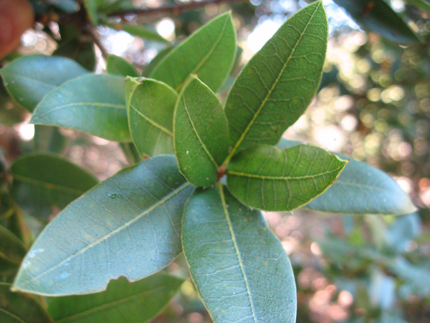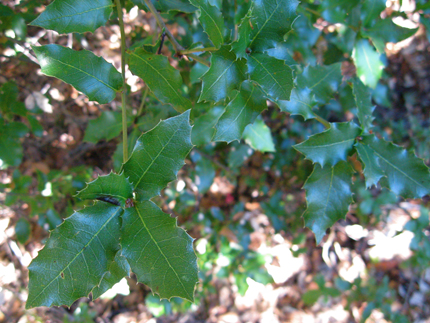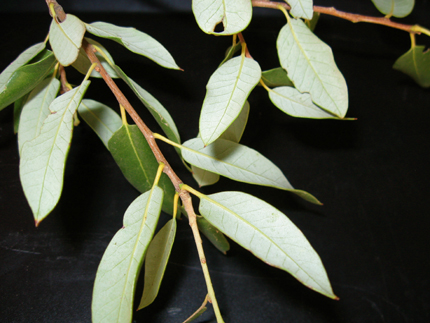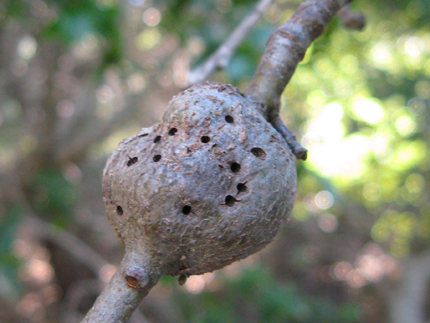
The Oaks of California & the Santa Lucia Mountains
The oaks of California are very much a work in progress. Even though we like plants to fit in neat categories, the California oaks are a wonderful demonstrations that many things in nature defy clear categories and that evolution is very much still at work. Relative to other tree species of the area, California oaks commonly hybridize and the family is in constant flux.
To make things even more challenging (or fun) is the variation of leaves on a single tree. For example the Interior Live Oak will often have sharply toothed "holly-like" leaves on the lower branches and when the tree is young. On older trees and higher branches the leaves are without spines and have lancate leaf with and entire margin.
This genetic variation and diversity has led to many great debates among botanist, creating confusion for the expert and beginner alike. Few plant books agree on the names and hybrids that occur. As you venture forth into learning the oaks, don't expect all specimens to fit the neat photos or drawings that guide you. Expect local variation. I once took a cutting and photos of an oak I could not identify to an oak "expert." After many questions and detail observation I was please to hear a few possibilities tossed my way, ending with the honest statement, "I don't know for sure."
Oaks are deeply interwoven into the complex web of life in California. They are integral to the health of many species that depend on them. The native peoples of California had a intimate relationship with oaks using them for food, fuel, tools, and shelter. Today it is hard to imagine the "look and feel " of California without oaks as part of the landscape. Even the latin name for oak; Quercus comes from the Celtic words "fine tree." Fine trees indeed.

Typical Interior Live Oak leaves with no spines from same tree as photo below.

Interior Live Oak leaves from same tree as above only 2 feet away.

Canyon Live Oak leaves can look very similar to Interior Live Oak leaves in shape and size until you turn the leaf over.

Coast Live Oak gall. California oaks host over 200 species of gall wasps — more than any tree in California and the Western States. Gall wasps are fairly host specific. The complex relationship between oak and gall wasp species varies from parasitic to mutually beneficial with much still to be learned.
Where there are oaks there are often the signs of the native peoples of California. This Esselen Indian bedrock mortar is in a small open meadow surrounded by Coast, Interior, and a few Canyon Live Oaks.